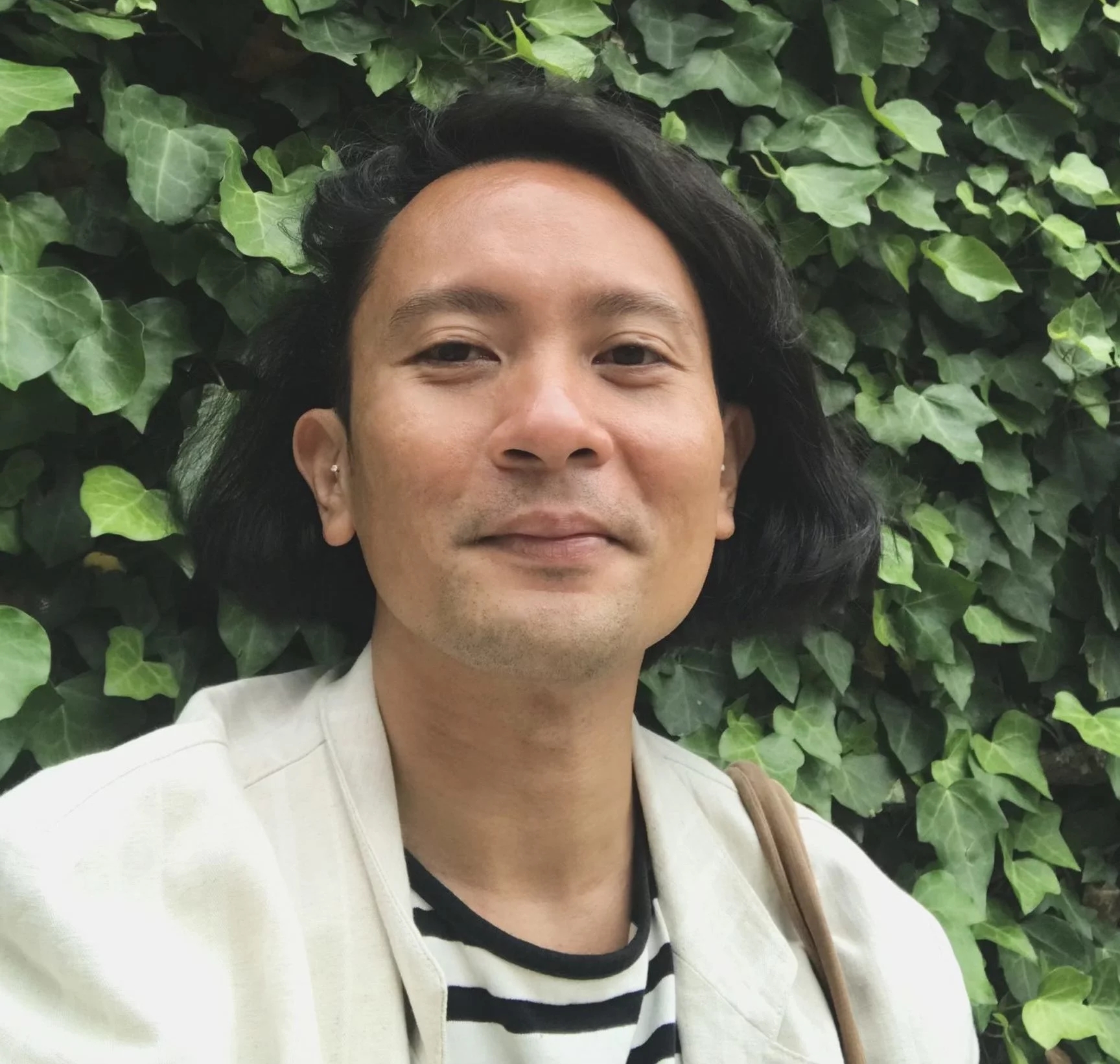WORDS AND ILLUSTRATIONS BYAJ Mallari
Listen to this story. Narrated by AJ Mallari.
With the remaining light from the backlit sunset sky, the ebbing glowing tides turned magnetic. We ventured out into the shore transfixed, eyeing promising patterns on the sand.

This might have been a trail of smoky sea dust left by a crab scampering for cover, or a glimmer cast off by the iridescent shell of the anemone. Whatever it was, the trick of the trade was hinged on quick hand movements and ingesting copious amounts of air, just in case. I saw something move from my periphery but quickly broke my gaze off when I realized it was just somebody’s foot. I leveled my gaze to check how many of us, the island foragers, came out that night to partake of the ocean’s free bounty.
I smiled at a mother-daughter duo, the only constants in a sea of changing faces. They arrived earlier than most and left while everyone else was half-submerged in seawater. The previous week, the mother came up to me after hearing the distinct clunking of my pail, filled with seashells, most of which were common Manila clams. She wanted to exchange her crabs for the clams, needing to make “imbao,” a local soup made from boiled clam stock seasoned with wild ginger, whole peppercorns, and homemade fish sauce topped with young chili leaves. The dish was known to help mothers yield more milk when nursing. It instantly made sense as to why she didn’t tarry like most of us; she had to go home to her baby. I made a quick swipe of her squids and filled her bucket with my clams. I thought we had come full circle; our ancestors used dried clam and cowrie shells as currency when the islands were a tad younger.

Apart from them, the rest were a blur of movements. You could sense who was out there desperate to make a meal, the leisurely waders humming as they went, the competitive divers who without any gear swam farther into the open sea, you could also make out the teenagers by the light of their handphone flashlights and then there was me, a solitary figure from the city with no muscle memory groping for invisible tethers while navigating the moss-covered shallows, taking every slow step as a practice in restraint and reflection.
The retreating tides added further texture to the already busy surface, and the darkening sky rendered my untrained eyes almost dysfunctional. At this point, I made my retreat into dry land and left the foraging festival to the innately talented professionals and their young novices who, in their tender years, were already so adept at “swim-and-spot.”
The wharf transformed into a melee of sounds and odors. Where there was little light left, suddenly you could smell happiness and taste the sunset. The kids scampered about excited for a meal, waiting for their parents to pick a spot to bivouac. On the other end of the port walk, a kindling breathed a slow and steady fire where oysters lay toasting, cooking in the last bit of the sea bubbling inside their shells. Passing by the gathering, I was invited to share the instant feast. I fished out some of my crabs in exchange for the freshly roasted bivalves. There’s a particular way these mollusks are eaten on the islands. Once the two halves are pried open, revealing the sizzling concoction of cooked flesh inside, we squeeze fresh calamansi (miniature limes packed with a punch) and drizzle spicy coconut vinegar on the soupy concoction before slurping down the oyster from the wide end – it’s more aerodynamic done this way. The lukewarm brine leaves a trail of citrusy, smoked saltiness followed by the tangy note of the fermented coconut sap. We then wash this down with a shot of the local sugar cane rum, sweet and scented with a heady anise aftertaste. The group thins down as everyone makes their way to their own kitchens for the main meals. The hangers-on continue the roast until the last of the empty oyster shells are thrown back into the sea with a loud thunk.

As I make my way to where I parked my cycle the gleaners come with their small baskets at peace with their meager expectations. After all, at this time of the night, the aquatics’ camouflage is at its most effective, and not even the light of the waning moon can throw beams into the deeper shadows where they burrow.
Riding my cycle back to my hillside perch, I pass by the evening foot traffic. The market sellers lugging their empty baskets save for the unsold vegetables to be fed to their farm animals. The barbecue stalls begin grilling skewered meat marinated overnight in their secret sauces. All the while the gentle sea breeze cools us down softly, caressing the skin singed by the day’s sun. I made a mental note to gather some turmeric, galangal, and wild ginger for a sunburn balm. The uncharacteristically hot monsoon season has thrown all of us into a tailspin. The crops are frail and dehydrated, no squids are spawning on the eastern shores and a hyper bloom of seaweed everywhere is overpowering the delicate shoreline ecosystems already so fragile. Pretty soon forage festivals will be a thing of the past, and we’ll be left rudderless. Unsure how to mark seasons, unsynced from the ebb and flow of the tides, and our lives rendered tasteless— unseasoned by the salty seawater and bland from the absence of island spice.
